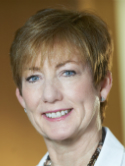| Abstract: |
IMPORTANCE Rates of contralateral prophylactic mastectomy (CPM) have markedly increased but we know little about the influence of surgeons on variability of the procedure in the community. OBJECTIVE To quantify the influence of the attending surgeon on rates of CPM and clinician attitudes that explained it. DESIGN, SETTING, AND PARTICIPANTS In this population-based survey study, we identified 7810 women with stages 0 to II breast cancer treated in 2013 to 2015 through the Surveillance, Epidemiology, and End Results registries of Georgia and Los Angeles County. Surveys were sent approximately 2 months after surgery. Surveys were also sent to 488 attending surgeons identified by the patients. MAIN OUTCOMES AND MEASURES We conducted multilevel analyses to examine the impact of surgeon influence on variations in patient receipt of CPM using information from patient and surgeon surveys merged to Surveillance, Epidemiology, and End Results data. RESULTS A total of 5080 women responded to the survey (70%response rate), and 377 surgeons responded (77% response rate). The mean (SD) age of responding women was 61.9 (11) years; 28%had an increased risk of second primary cancer, and 16%received CPM. Half of surgeons (52%) practiced for more than 20 years and 30% treated more than 50 new patients with breast cancer annually. Attending surgeon explained a large amount (20%) of the variation in CPM, controlling for patient factors. The odds of a patient receiving CPM increased almost 3-fold (odds ratio, 2.8; 95%CI, 2.1-3.4) if she saw a surgeon with a practice approach 1 SD above a surgeon with the mean CPM rate (independent of age, diagnosis date, BRCA status, and risk of second primary). One-quarter (25%) of the surgeon influence was explained by attending attitudes about initial recommendations for surgery and responses to patient requests for CPM. The estimated rate of CPM was 34%for surgeons who least favored initial breast conservation and were least reluctant to perform CPM vs 4%for surgeons who most favored initial breast conservation and were most reluctant to perform CPM. CONCLUSIONS AND RELEVANCE In this study, attending surgeons exerted influence on the likelihood of receipt of CPM after a breast cancer diagnosis. Variations in surgeon attitudes about recommendations for surgery and response to patient requests for CPM explain a substantial amount of this influence.Grant: Funding/Support: Thisworkwas supported by grant P01 CA163233 to the University of Michigan from the National Cancer Institute. The collection of Los Angeles County cancer incidence data used in this studywas supported by the California Department of Public Health pursuant to California Health and Safety Code Section 103885; US Centers for Disease Control and Prevention's (CDC) National Program of Cancer Registries, under cooperative agreement 5NU58DP003862-04/DP003862; and the National Cancer Institute's Surveillance, Epidemiology, and End Results Program under contract HHSN261201000140C awarded to the Cancer Prevention Institute of California, contract HHSN261201000035C awarded to the University of Southern California, and contract HHSN261201000034C awarded to the Public Health Institute. The collection of cancer incidence data in Georgia was supported by contract HHSN261201300015I and Task Order HHSN26100006 from the National Cancer Institute and cooperative agreement 5NU58DP003875-04-00 from the CDC. |




